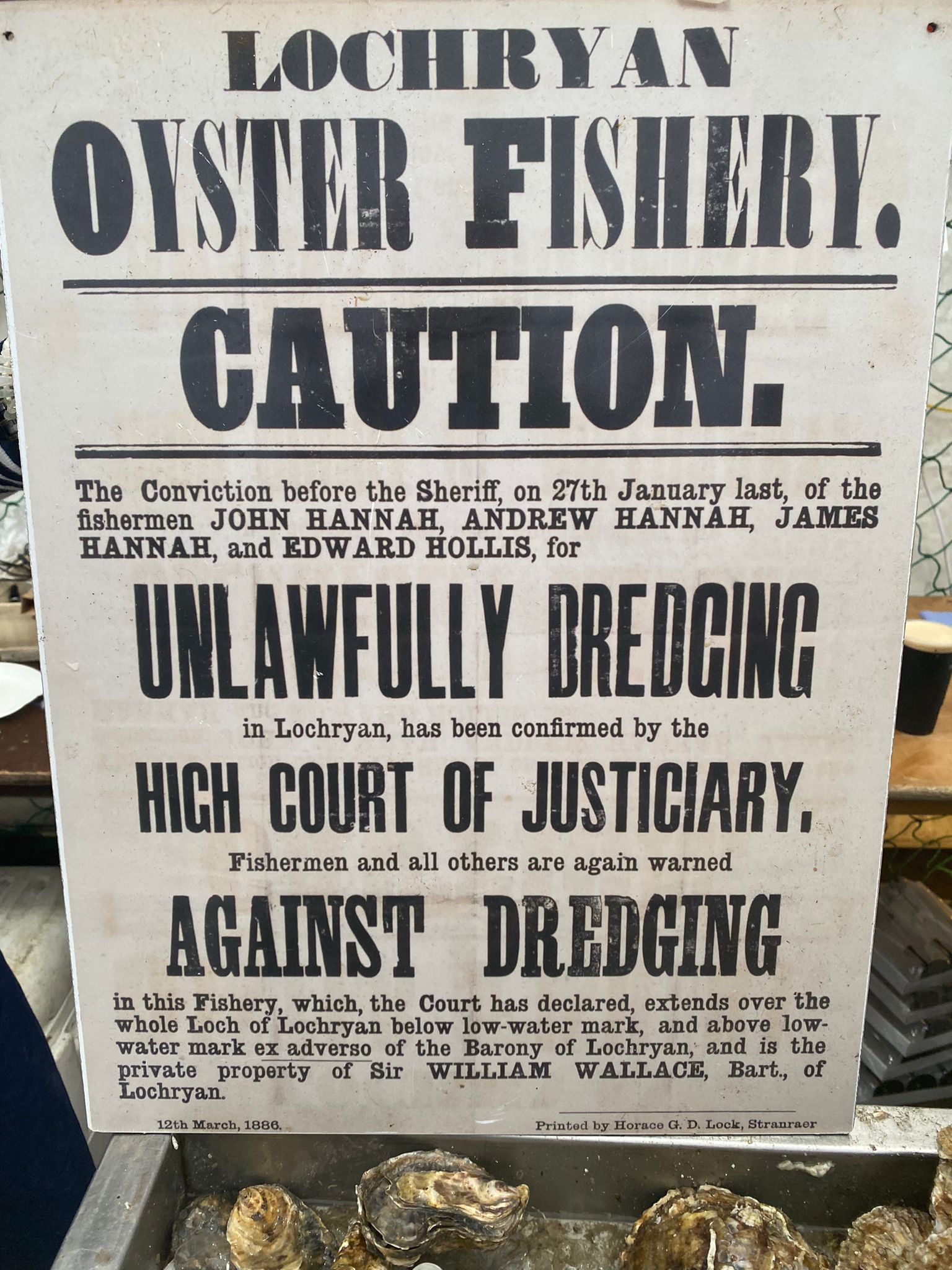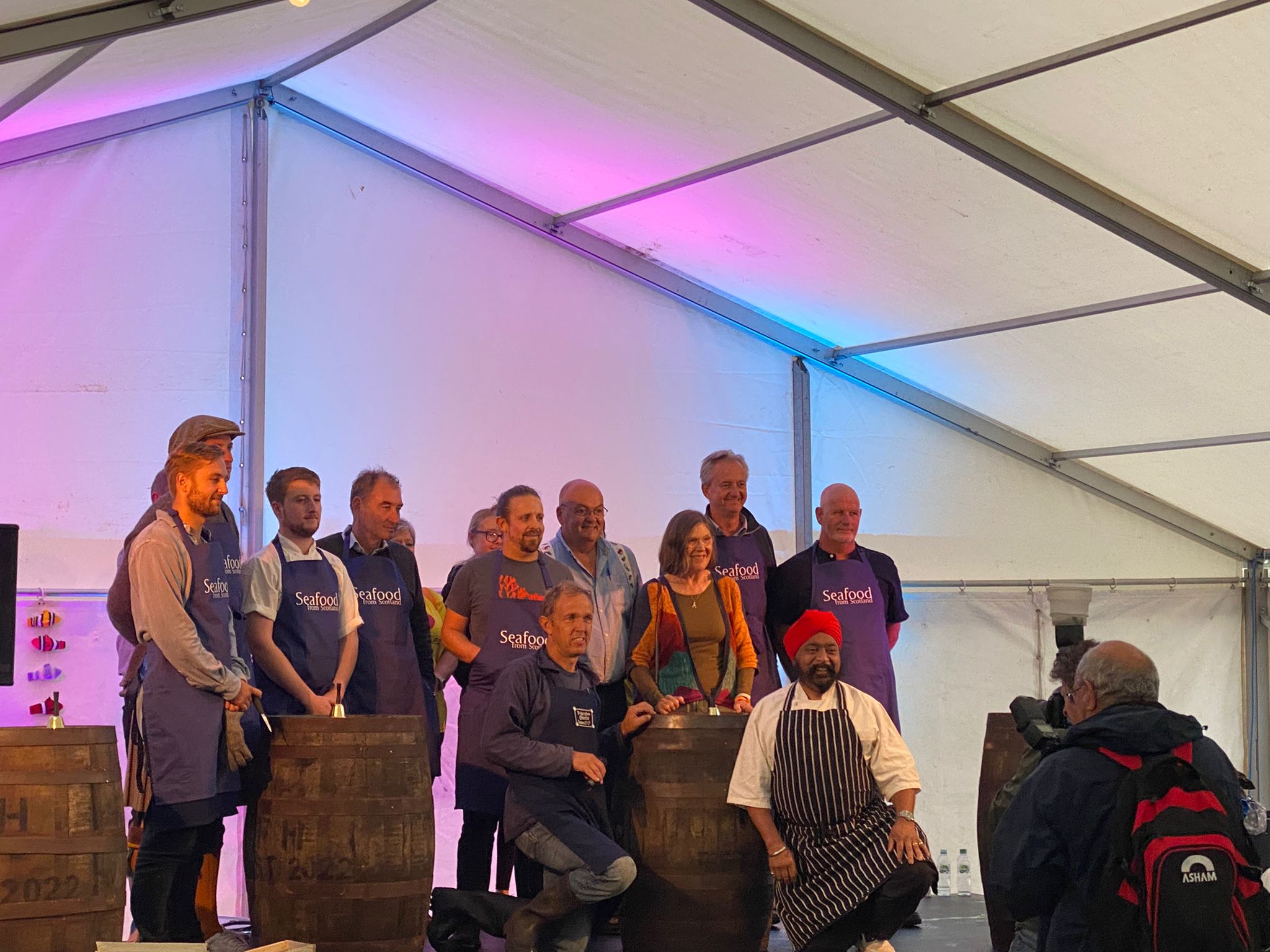
A NEW Scottish champion was crowned over the weekend. Two, in fact.
Fin Bullough was named the nation’s oyster eating champion at the festival celebrating the shellfish in Stranraer. Bullough knocked back six oysters and a pint of Guinness in an impressive 13.65 seconds.
— Xander (@xanderescribe) September 4, 2022
Alexander Wallace won the more sensible shucking championship, which saw contestants race to prepare a dozen oysters to restaurant standards. When you learn of his family history, it’s not hard to see why.
The descendants of William Wallace – like Alexander (below) and his father Ben – have been custodians of the oysters in Loch Ryan for longer than there has been a United Kingdom.


Six years before the 1707 Act of Union, King William of Orange granted the Wallaces a royal charter for the native oyster bed in the sea loch.
Locals say that the protection afforded by the charter is one of the reasons why native oysters can still be harvested off Stranraer in Dumfries and Galloway, while populations across the UK have plummeted by 95% since the mid-1800s.
Other than some small-scale aquaculture production on the west coast, Loch Ryan is now the only native oyster fishery in Scotland. The seasonal shellfish which it produces are a true delicacy, being sold in London for up to £8.50 for a single one.
But at the Oyster Festival, held to mark the start of the native oyster season, it’s £10 for a half dozen.
“Oysters are eaten all across the world and we’ve got some of the best,” celebrity chef Tony Singh told The National. “Here at Loch Ryan is one of the few oyster fisheries where we’ve got our natives. They’re nice, round, super sweet.
“On the half shell is great, but done in a South Indian-style curry is great as well. It shows you the versatility of them, and it’s on our doorstep – so why not?”

Singh’s cooking demonstration is just one of the events on the festival programme, alongside the shucking and eating contests, talks from other top chefs such as Clodagh McKenna, and a host of live music.
There’s also a craft fair showcasing cheese, meats, spirits, and artworks from across the country.
“It’s just a joy,” south Scotland MSP Emma Harper – who describes herself as a “born and bred Stranraer lassie” – told The National.
“To see this kick off again after the pandemic … it’s really great, all the people out here – even though it’s raining.”

The Saturday could have been in danger of being a washout, but the weather did little to dampen spirits.
Around 17,000 people passed through the festival gates when it was last held in 2019, with around 5000 oysters shucked, sold and eaten over the weekend.
It’s not only native oysters on sale, but also their much more commonly farmed cousins, the Pacific (or Rock) oyster.
Rock oysters can be harvested year-round, while the natives can only be harvested from September 1 to April 30 – which is where the old saying about eating shellfish in months which contain the letter “r” comes from.
Native oysters are also slower growing, taking five to eight years to reach market size, instead of two to three.

Previously regarded as a “poor man’s food” and not a luxury, millions of oysters were dredged up to feed the working classes during the industrial revolution. This left many beds around Scotland decimated.
The festival, which Singh says is “very community-oriented”, is making an effort to reconnect people with the food which comes from their seas.
And since it was first held in 2017, the oyster festival has quickly become a key event in the Stranraer calendar.
Run by the town’s development trust, the festival brings much-needed attention to a place which was hit hard by the loss of the Stranraer to Ireland ferries in 2011.
“Stena was the ferry operator that was based at Stranraer at the port here,” Harper said. “I think it was eleven years ago that they moved a few miles up the road to Cairnryan.
“That stopped the local footfall through the town when people were coming to get on the ferry … so it’s been really difficult.”
Harper praises the job that the Stranraer Development Trust, chaired by Romano Petrucci, have done with the festival, and points to further efforts to stimulate economic activity in the area.
The Stranraer Water Sports Association (SWSA), set up in 2016, is looking to make the most of the corner of Loch Ryan which is not now disturbed by the regular ferry sailings.
In 2019, the town played host to the St Ayles Skiff world championships (a type of wooden rowing boat with four oars) which saw 200 teams from all around the world compete.
And the Rhins of Galloway coastal route is under development, an 83-mile walking path around the length of the south western peninsula.
Stranraer Oyster Festival is held the first weekend of September each year. More information can be found on the Stranraer Development Trust’s website.







